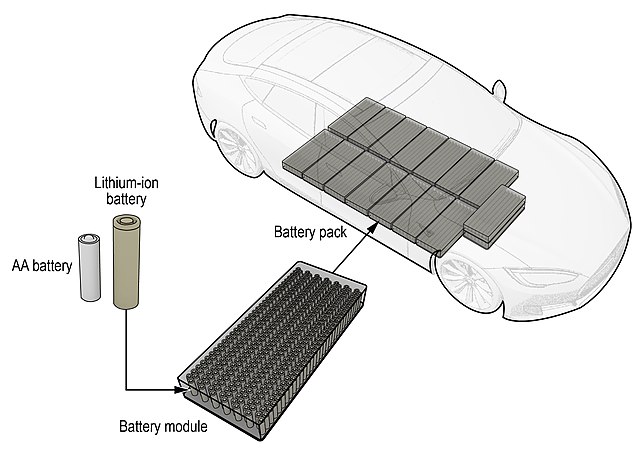Cold Climate Conditions & Electric Vehicle Battery Degradation
Teryn Cameron
Introduction
Growing environmental awareness and a focus on decarbonization have led us toward accelerated electrification. Since the 2015 Paris Agreement, this momentum has only intensified, hoping to lead us to a future of widespread adoption of electric vehicles (EVs). EVs will help us attain our carbon reduction objectives as societies transition away from petrol and diesel and governments worldwide set ambitious environmental targets. For instance, the United States aims for 50% of vehicles sold in 2030 to be electric (Senol et al., 2023; Agarwal et al., 2014).
While setting goals is crucial for progress, it is equally important to ensure they are realistic and accompanied by actionable plans for achievement. The advancement of technologies, such as fracking, has increased our fossil fuel reserves, as seen in countries like the United States, where they are now in the lead in oil and gas production. This change highlights the ongoing tension between technological advancements and our society’s energy consumption habits (Covert et al., 2016).
Challenges of Electric Vehicles (EVs)

Climate
Many countries and regions, such as Canada, Norway, China, and the northern U.S., adopting EVs endure severe winter conditions that are often sub-zero. The lack of adequate industry and literature research in these climates makes it challenging to understand battery degradation, as cold environments tamper with battery lifetime prediction. Due to these knowledge gaps, EV adoption faces difficulties. Additionally, power quality concerns may be introduced if chargers operate below their rated capacity, depending on if higher EV demand is anticipated in winter months. For EVs to compete with ICEs, they need to work efficiently regardless of weather conditions (Senol et al., 2023).

Batteries
Lithium-ion batteries (LIBs) are the most common kind of EV battery today, and they are estimated to be worth approximately $70 billion by 2026, including all modes of transport they are used in (Murugan et al., 2022). Battery degradation refers to the factors contributing to a decline in battery performance and capacity, including driving habits, charging patterns, environmental conditions, and elapsed time. As temperature decreases, battery degradation increases. For example, at -25°C, the Mitsubishi i-MiEV’s driving range decreases to 42 km compared to 128 km at 21°C (Senol et al., 2023). To keep LIBs at a standard lifecycle and health status and avoid the two key dilemmas related to operations (performance loss and degradation), they require heating internally and/or externally. Reliable battery thermal management systems (BTMS) are essential for this purpose.
Conclusion
In conclusion, the shift toward EVs is driven not only by environmental concerns and decarbonization efforts but also by compelling economic factors. The projected market value of LIB cells shows the significant economic opportunities in the EV industry. Furthermore, government initiatives and targets for EV adoption, such as aiming for half of vehicles sold in 2030 to be electric in the United States, highlight the growing importance of EVs in national economies. However, it is important to note that challenges remain, particularly in regions with severe winter conditions, where more research should be done to understand battery degradation and the optimal operation of EVs. Overcoming these challenges will require continued investment in reliable BTMS and innovative solutions to ensure the competitiveness of EVs against ICE vehicles. As we navigate this transition in our society, it is important to find a balance between environmental sustainability and economic viability. This balance will help ensure the benefits of EV adoption extend beyond reducing carbon emissions to driving economic growth and prosperity.
Media Attributions
Figure 1: “Graphic-working (50831686767)” by National Transportation Safety Board (2021), via Wikimedia Commons, is in the public domain.
Figure 2: “E-charging station (ECS) – electric vehicle (EV) recharging point – supply equipment (EVSE) – colonnina di ricarica elettrica icon” by Tommaso.sansone91 (2019), via Wikimedia Commons, is used under a CC0 1.0 Universal Public Domain license.
References
Agarwal, L., Wang, P., & Goel, L. (2014). Using EV battery packs for vehicle-to-grid applications: An economic analysis. IEEE Innovative Smart Grid Technologies – Asia, 663–668. https://doi.org/10.1109/ISGT-Asia.2014.6873871.
Covert, T., Greenstone, M., & Knittel, C. R. (2016). Will we ever stop using fossil fuels? Journal of Economic Perspectives, 30(1), 117–138. https://doi.org/10.1257/jep.30.1.117.
Iwafune, Y., & Ogimoto, K. (2020). Economic impacts of the demand response of electric vehicles considering battery degradation. Energies, 13(21), Article 5771. https://doi.org/10.3390/en13215771.
Kalogiannis, T., Jaguemont, J., Omar, N., Mierlo, J. V., & den Bossche, P. V. (2019). A Comparison of internal and external preheat methods for NMC batteries. World Electric Vehicle Journal, 10(2), Article 18. https://doi.org/10.3390/wevj10020018.
Murugan, M., Saravanan, A., Elumalai, P. V., Murali, G., Dhineshbabu, N. R., Kumar, P., & Afzal, A. (2022). Thermal management system of lithium-ion battery packs for electric vehicles: An insight based on bibliometric study. Journal of Energy Storage, 52(A), Article 104723. https://doi.org/10.1016/j.est.2022.104723.
National Transportation Safety Board. (2021). Graphic-working (50831686767) [Image]. Wikimedia Commons. https://commons.wikimedia.org/wiki/File:Graphic-working_(50831686767).jpg.
Peng, X., Chen, S., Garg, A., Bao, N., & Panda, B. (2019). A review of the estimation and heating methods for lithium-ion batteries pack at the cold environment. Energy Science & Engineering, 7(3), 645–662. https://doi.org/10.1002/ese3.279.
Senol, M., Bayram, I. S., Naderi, Y., & Galloway. (2023). Electric vehicles under low temperatures: A review on battery performance, charging needs, and power grid impacts. IEEE Access, 11, 39879–39912. https://doi.org/10.1109/ACCESS.2023.3268615.
Tommaso.sansone91. (2019). E-charging station (ECS) – electric vehicle (EV) recharging point – supply equipment (EVSE) – colonnina di ricarica elettrica icon [Image]. Wikimedia Commons. https://commons.wikimedia.org/wiki/File:E-charging_station_(ECS)_-_electric_vehicle_(EV)_recharging_point_-_supply_equipment_(EVSE)_-_colonnina_di_ricarica_elettrica_icon.png.

